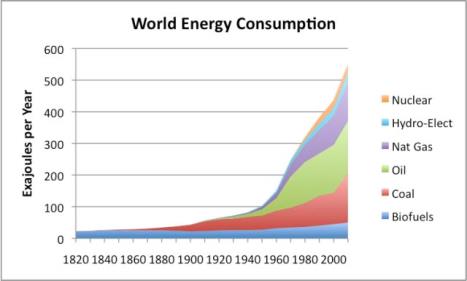Republicans, Democrats, and environmentalists all have favorite energy myths. Even Peak Oil believers have favorite energy myths. The following are a few common mis-beliefs, coming from a variety of energy perspectives. I will start with a recent myth, and then discuss some longer-standing ones.
Myth 1. The fact that oil producers are talking about wanting to export crude oil means that the US has more than enough crude oil for its own needs.
The real story is that producers want to sell their crude oil at as high a price as possible. If they have a choice of refineries A, B, and C in this country to sell their crude oil to, the maximum amount they can receive for their oil is limited by the price the price these refineries are paying, less the cost of shipping the oil to these refineries.
If it suddenly becomes possible to sell crude oil to refineries elsewhere, the possibility arises that a higher price will be available in another country. Refineries are optimized for a particular type of crude. If, for example, refineries in Europe are short of light, sweet crude because such oil from Libya is mostly still unavailable, a European refinery might be willing to pay a higher price for crude oil from the Bakken (which also produces light sweet, crude) than a refinery in this country. Even with shipping costs, an oil producer might be able to make a bigger profit on its oil sold outside of the US than sold within the US.
The US consumed 18.9 million barrels a day of petroleum products during 2013. In order to meet its oil needs, the US imported 6.2 million barrels of oil a day in 2013 (netting exported oil products against imported crude oil). Thus, the US is, and will likely continue to be, a major oil crude oil importer.
If production and consumption remain at a constant level, adding crude oil exports would require adding crude oil imports as well. These crude oil imports might be of a different kind of oil than that that is exported–quite possibly sour, heavy crude instead of sweet, light crude. Or perhaps US refineries specializing in light, sweet crude will be forced to raise their purchase prices, to match world crude oil prices for that type of product.
The reason exports of crude oil make sense from an oil producer’s point of view is that they stand to make more money by exporting their crude to overseas refineries that will pay more. How this will work out in the end is unclear. If US refiners of light, sweet crude are forced to raise the prices they pay for oil, and the selling price of US oil products doesn’t rise to compensate, then more US refiners of light, sweet crude will go out of business, fixing a likely world oversupply of such refiners. Or perhaps prices of US finished products will rise, reflecting the fact that the US has to some extent in the past received a bargain (related to the gap between European Brent and US WTI oil prices), relative to world prices. In this case US consumers will end up paying more.
The one thing that is very clear is that the desire to ship crude oil abroad does not reflect too much total crude oil being produced in the United States. At most, what it means is an overabundance of refineries, worldwide, adapted to light, sweet crude. This happens because over the years, the world’s oil mix has been generally changing to heavier, sourer types of oil. Perhaps if there is more oil from shale formations, the mix will start to change back again. This is a very big “if,†however. The media tend to overplay the possibilities of such extraction as well.
Myth 2. The economy doesn’t really need very much energy.
We humans need food of the right type, to provide us with the energy we need to carry out our activities. The economy is very similar: it needs energy of the right types to carry out its activities.
One essential activity of the economy is growing and processing food. In developing countries in warm parts of the world, food production, storage, transport, and preparation accounts for the vast majority of economic activity (Pimental and Pimental, 2007). In traditional societies, much of the energy comes from human and animal labor and burning biomass.
If a developing country substitutes modern fuels for traditional energy sources in food production and preparation, the whole nature of the economy changes. We can see this starting to happen on a world-wide basis in the early 1800s, as energy other than biomass use ramped up.
 Â
Â
Figure 1. World Energy Consumption by Source, Based on Vaclav Smil estimates from Energy Transitions: History, Requirements and Prospects and together with BP Statistical Data on 1965 and subsequent
The Industrial Revolution began in the late 1700s in Britain. It was enabled by coal usage, which made it possible to make metals, glass, and cement in much greater quantities than in the past. Without coal, deforestation had become a problem, especially near cold urban areas, such as London. With coal, it became possible to use industrial processes that required heat without the problem of deforestation.
Processes using high levels of heat also became cheaper, because it was no longer necessary to cut down trees, make charcoal from the wood, and transport the charcoal long distances (because near-by wood had already been depleted).
The availability of coal allowed the use of new technology to be ramped up. For example, according to Wikipedia, the first steam engine was patented in 1608, and the first commercial steam engine was patented in 1712. In 1781, James Watt invented an improved version of the steam engine. But to actually implement the steam engine widely using metal trains running on metal tracks, coal was needed to make relatively inexpensive metal in quantity.

